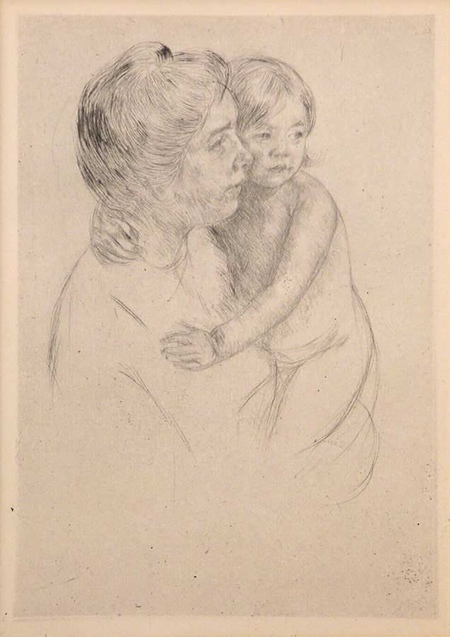Mary Cassatt
Mary Stevenson Cassatt was an American painter and printmaker. She lived much of her adult life in France, where she first befriended Edgar Degas and later exhibited among the Impressionists.
Cassatt admired Degas, whose pastels had made a powerful impression on her when she encountered them in an art dealer’s window in 1875, ‘I used to go and flatten my nose against that window and absorb all I could of his art’, she later recalled. ‘It changed my life. I saw art then as I wanted to see it.’
Degas had considerable influence on Cassatt. She became extremely proficient in the use of pastels, eventually creating many of her most important works in this medium. Degas also introduced her to copper engraving, of which he was a recognised master, which strengthened her control of line and overall draughtsmanship. She became the subject in his series of etchings recording their trips to the Louvre.
Cassatt often created images of the social and private lives of women. Her popular reputation is based on an extensive series of rigourously drawn, tenderly observed, yet largely unsentimental paintings and prints on the theme of the mother and child. Some of these works depict her own relatives, friends and clients, althought in her later years she generally used professional models in compositions that are often reminiscent of Italian Rennaisance depictions of the Madonna and Child. After 1900, she concentrated almost exclusively on mother and child subjects.
Cassatt was described by Gustave Geffroy in 1894 as one of ‘les trois grandes dames’ of Impressionism alongside Marie Branquemond and Berthe Morisot. In recognition of her contribution to the arts, France awarded her the Legion d’honneur in 1904.


